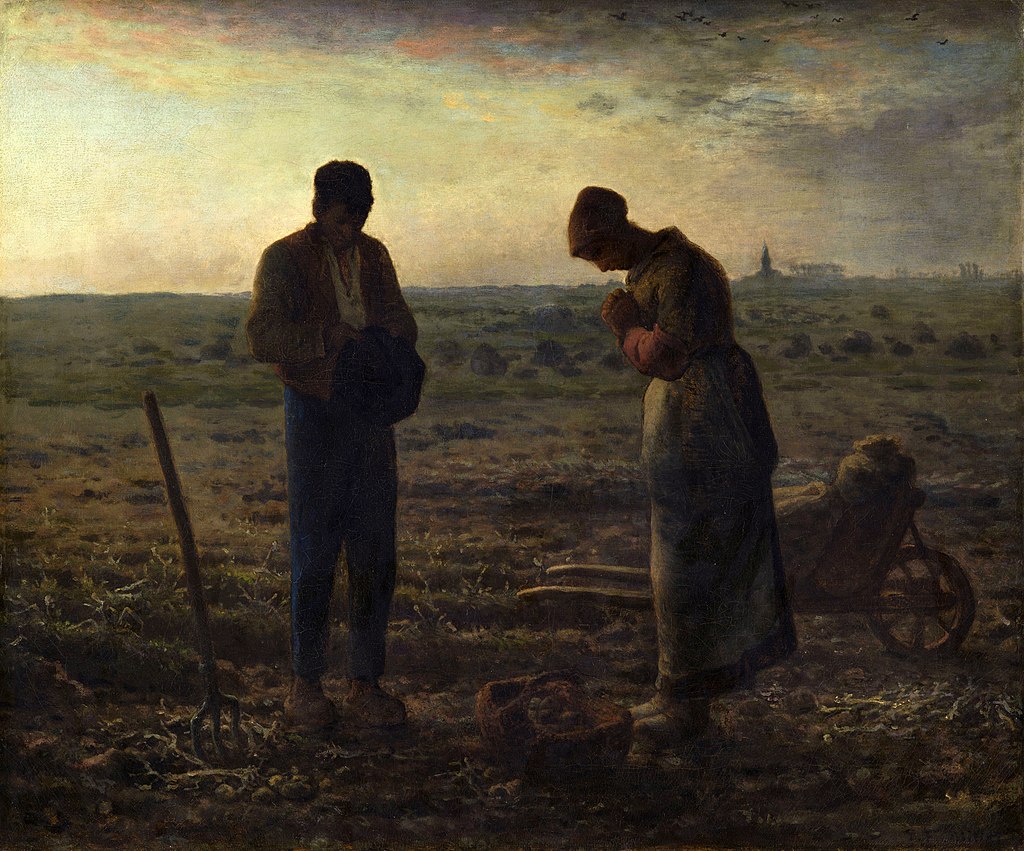Throughout the nineteenth century, many expeditions ventured into the hinterland of West Africa all questing for the title ‘discoverer of the source of the river Nile’. In the same way, a century or more later, many wild stabs have been made in the direction of naming the source of the shift in art that was to be known as Modernism. Just like the Nile, there is general consensus on the area in which it is to be found, namely France and somewhere in the mid-nineteenth century – Modernism that is, not the Nile. I will not make a claim to have any new theory or award my entire support to any name already in play, I have neither the expertise nor the inclination to solve this particular puzzle. However, amongst the names that one finds put forward as candidates for Modernism’s progenitor – Delacroix, Manet, Courbet – there is one who, for me, has stood apart, a man who appeared to have little interest in shock-value or radicalism and yet produced some of the most quietly powerful and weighty images of the nineteenth century, Jean-François Millet.

My experience of Millet began with a painting now in the collection of the National Museum of Wales, Cardiff. As a boy, my conscious interest in art was as negligible as it is with most children (this idea, very much in vogue with ‘educationalists’ in the recent years, that all children from a young age are inherently artistic and benefit from hours on end of finger painting is bizarre). Thanks to my parents I knew the big names of our local museum, Monet, Manet, van Gogh, and at a push may have been able to differentiate them but my attention span for this kind of thing was short and my father knew well enough to keep visits to the National Gallery under thirty-minutes. This was the case but for one exception, a large painting that hung in a grey, subsidiary room to the Impressionist highlights of Cardiff’s collection. Millet’s Peasant Family, 1872, kept drawing me back and not necessarily because I liked it. I didn’t then, I found it unsettling and confrontational, but I do now for just the same reasons.
At that young age I could not have articulated the feelings and thoughts provoked in me by this work, and indeed the image of it that lingered in my mind afterwards. I’m not entirely sure I can do so now. Certainly I can say I found it haunting, its unfinished quality along with its spectral pallet of greys, browns, and blacks took care of that, but it was further to this the faces of the subjects, shadowy and undefined with deep dark eye sockets, that meant I found it hard to look away. The silent and unspecific appeal of these poor French farmers from the nineteenth century worried me as a child and delights me now.
Millet was born the year before Napoleon’s final defeat in a small village on the left-hand extremity of the Normandy peninsula, the French equivalent of the Outer-Hebrides or the very tip of Cornwall. Before being sent for preliminary art training in Cherbourg he assisted his father and the wider community with the ancient and dignified tasks of sowing, harvesting, winnowing, and threshing in a pre-industrial age. When, later in his career, he was to have some success as a painter it would be with those humble agricultural activities as his subjects.

At a time when the art world of France, and indeed Europe, was centred on Paris, where Millet had been schooled in the École des Beaux-Arts, he took the unconventional decision to move his family out to the rural village of Barbizon, some sixty miles south of the capital. Here he began to paint scenes unthinkable to the established studios of the Parisien artistic elites. There were no ravishing nude venuses or conglomerations of cherubim to be found in the French countryside, no society doyennes to be immortalised in contrived portraiture or heroes of ancient myth. What there was were the locals, the inhabitants of la France profonde.
The term is appropriate given the profound dignity of the people captured in Millet’s canvases, the most famous of which being his The Gleaners of 1857. Here he has chosen the very bottom strata of society, the three women who dominate the foreground are occupied in the act of gleaning, a tradition that dates back to the middle ages and quite likely beyond. Enshrined in French law since then, gleaning meant the right of people to collect any remains, overspill or missed patches of a field crop after the harvest had moved past. Millet shows us the harvest continuing in the distance but his focus is clearly on these three women, bent double in the pursuit of those left-overs that may well form their family’s sustenance for that week. They are not given individual identities, their faces obscured by their actions, they instead come to stand for that great mass of anonymous people living across the French countryside who must perform such backbreaking tasks simply in order to eke out an existence. Big, powerful subjects in a nation fresh from a chain of revolutions in the previous sixty years.

Millet’s harvesters, bakers, shepherds, and farmers are massive and tactile in their form, one entirely believes in their existence and their solidity despite their individually so often being absent. His peasants look as if they have climbed down from Michelangelo’s ceiling and got back to the day job. In his Woman Baking Bread (1854) a woman who Vermeer would have had quietly pouring milk becomes a heroic figure trusting her dough into the elemental furnace that she has tamed, the product of her baking is tantamount to alchemy and worth its weight in gold to the rural poor.
Those powerful forces also start to appear in the skies above the fields, for example in The Potato Harvest (1855) where the dark storm clouds to the right battle it out with the golden light on the left. The struggle of nature underscores the struggle of life for the figures in the foreground, they too are battling the elements to return the harvest before the storm arrives. Their entire lives are dictated by the land and the sky and thus, Millet seems to suggest, they are made noble by their deep connection with the life-giving soil of their country. The meek shall inherit the earth.

Religion is never very far from the surface in Millet, he returns again and again to the subject of shepherds and shepherdesses leading their flocks in the wilderness and if that wasn’t enough they are often in the act of prayer at the same time. Or there is the beautiful sketch Bringing home the calf born in the fields (c.1860) where the newborn calf is processed with all the solemnity of a relic, with calf and mother given as much dignity as the Virgin and child in a nativity. Although, quite simply one of the most moving images of faith in all western art must be The Angelus (1857-9). The humility of the scene, a man and woman in the field beyond their village, their tiny crop of potatoes from a full day’s work, their simple wheelbarrow and threadbare clothes, used as a vehicle for such grand thoughts, they have stopped in prayer as the sunsets and the distant church bells ring the angelus. They have so little and yet possess a dignity greater than those members of high society, sixty miles away, in the salons of Paris. A painting, one feels, Saint Francis would have enjoyed.

And so we return to the holy-family-like dignity of that mysterious Peasant Family. I know of no other image of the working class that speaks so powerfully to the Christian ideas of pride and nobility in poverty, whilst at the same time hovering a question mark of ambiguity over the real-life implications of such a doctrine. Proud and noble they may be, but do their faces and gestures no belie a powerful fear, the child clinging to the legs of its parents, neither of whom appears welcoming to the viewer’s intrusion. And further, beyond fear, a latent strength. An implicit willingness to fight in order to ensure the survival of the family, whether that be against the elements, starvation, or the aristocracy is left hanging in the charged air around this image.

